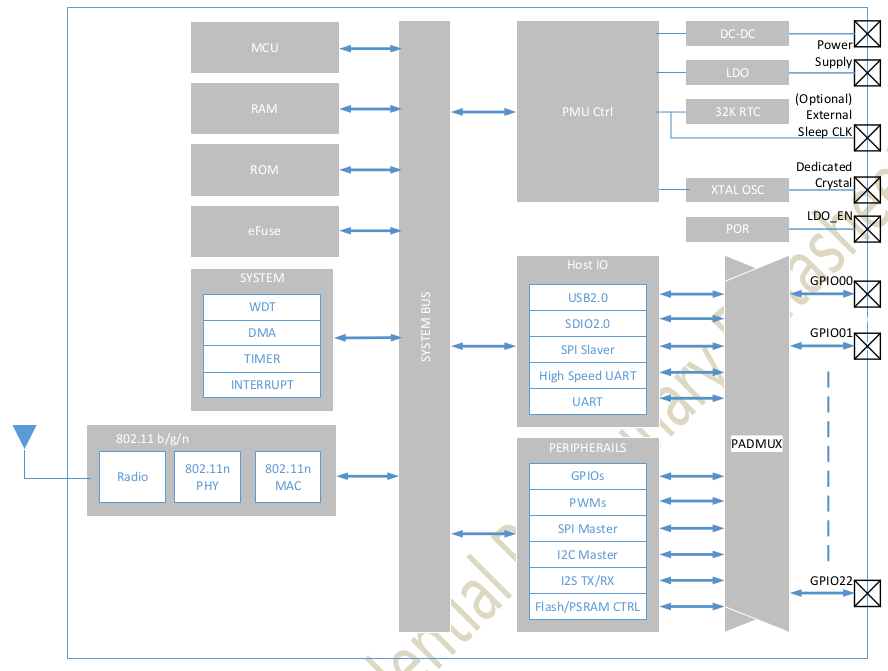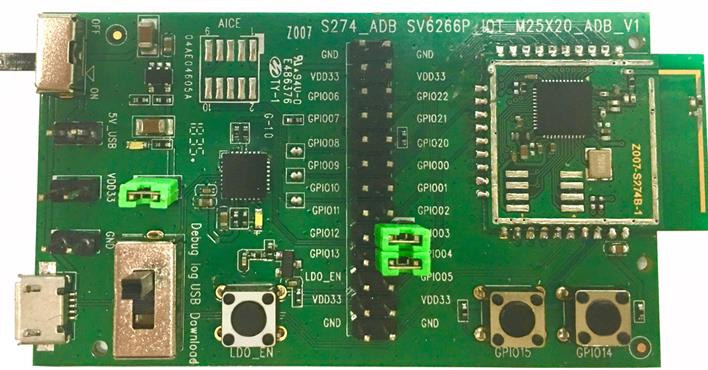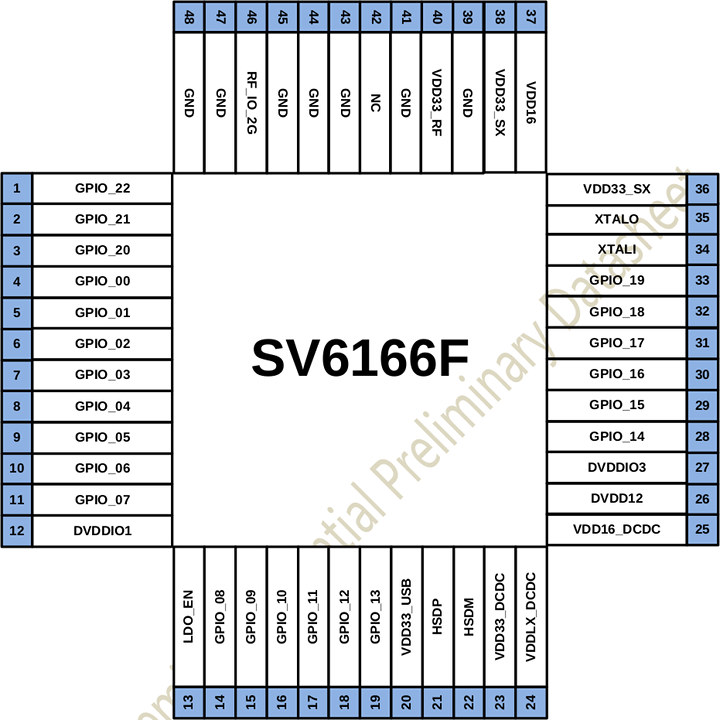The other day I wrote about Sonoff Micro WiFi USB Smart adapter featuring a CKW04 WiFi chip, but one person suspected it may be based on iCommSemi SV6166F chip with very similar features and the same 6x6mm form factor.
It’s still unclear whether that’s the chip used in Sonoff Micro, but AFAICR I never heard about iCommSemi previously, so let’s have a look at SV6166F in particular.

The SV6166F is a low-power single-chip device designed for integration into the Internet of Thing and embedded systems with support for 802.11b/g/n WiFi at 2.4 GHz.
SV6166F highlights:
- MCU – Andes Technology N10 processor with ILM/DLM and I-cache.
- Memory & Storage
- 128K ROM and 192 KB SRAM for Instruction and data SRAM in total
- 8K retention SRAM
- 2MB (16 Mbit) SPI flash in package
- Flash and PSRAM controller up to 16MB/64Mb with XIP
- WiFi Connectivity
- 802.11b, 11g, and 802.11n 1T1R
- AP/STA mode – Soft-AP
- WFA features – WEP/TKIP/WPA/WPA2; WMM/WMM PS
- Advanced 1×1 802.11n features:
- Full / Half Guard Interval
- Frame Aggregation
- Reduced Inter-frame Space (RIFS) & Space-time Block Coding (STBC) in Rx mode
- Greenfield mode
- Integrated WLAN CMOS efficient power amplifier with internal power detector and closed-loop power calibration
- Peripherals
- Suspend/Wake-up manager controller.
- Two-channel DMA to offload CPU.
- 1x I2S TX/RX channel for 8~32bits/8~192KHz in master/slave mode.
- 1x SPI master
- 1x I2C master
- 5x PWMs
- 4x millisecond timers, 4x microsecond timers, 2x watchdog
- All pins can be multiplexed to GPIO by user scenario
- Host I/Os
- USB 2.0
- SDIO 2.0 up to 50MHz
- SPI slave
- High-speed 4-pin UART with support RTSN/CTSN/RX/TX, baud rate up to 4.8 Mbps
- 2-pin UART up to 921600 bps
- Input voltage – 3.3V
- Power Consumption
- WiFi Off – 2 uA
- WiFi Tx (HT40, MCS7) – 287 mA
- WiFi Rx (HT40, MCS7) – 90 mA
- Package – QFN 48L, 6×6 mm, 0.4mm pitch
The SoC can be controlled using AT commands over USB, UART, SDIO or SPI, debugging done with AirKiss Android app, and there appears to be an SDK with bootloader and other source code, but for whatever reasons some of the documentation, available from a RAR file on the product page, and entirely in Chinese won’t open.

I also found an evaluation board in one of the documents called S274 but it does not appear to be available on the usual Chinese websites like Taobao or 1688.

Jean-Luc started CNX Software in 2010 as a part-time endeavor, before quitting his job as a software engineering manager, and starting to write daily news, and reviews full time later in 2011.
Support CNX Software! Donate via cryptocurrencies, become a Patron on Patreon, or purchase goods on Amazon or Aliexpress






https://world.taobao.com/item/581963364772.htm
Supposedly supported by AliOS but I only see SV6266
https://github.com/alibaba/AliOS-Things/tree/rel_3.0.0/platform/mcu/sv6266